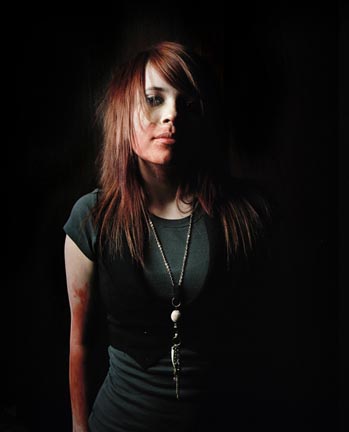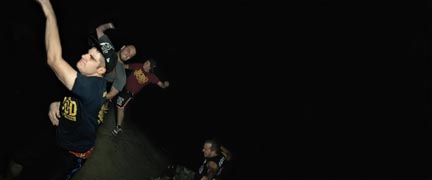Justin Schmitz
(American, b. 1981; resides in Chicago, IL)
Justin Schmitz’s series, In the Mist, is a five-year long documentation of the Airsoft gaming world that more broadly investigates white adolescent youth culture. Airsoft is a live-action simulation of first-person shooter video games that have gained popularity in the last two decades. In Schmitz’s images, players enact missions and scenarios with realistic weaponry and military fatigues in a forest landscape, blurring the lines between fantasy and reality. Young men resemble actual soldiers in combat—their skillsets appearing applicable to war or conflict—while others are less convincing, appearing in obvious costume and enacting seemingly innocent play with fake guns. Schmitz questions how the game affects the players’ senses of justice and compassion toward others, and how they will interact with society when they are no longer young men.
Justin Schmitz completed a BFA in Photography at Columbia College Chicago in 2004 and his MFA from Yale University in 2013. His work has been included in group exhibitions at the Salina Art Center, Salina, KS (2021); Athica Contemporary Art Center, Athens, GA (2013); Aperture Foundation, NY (2013); and the Evanston Arts Center, Illinois (2006); among many others.
https://justinschmitzphotography.com
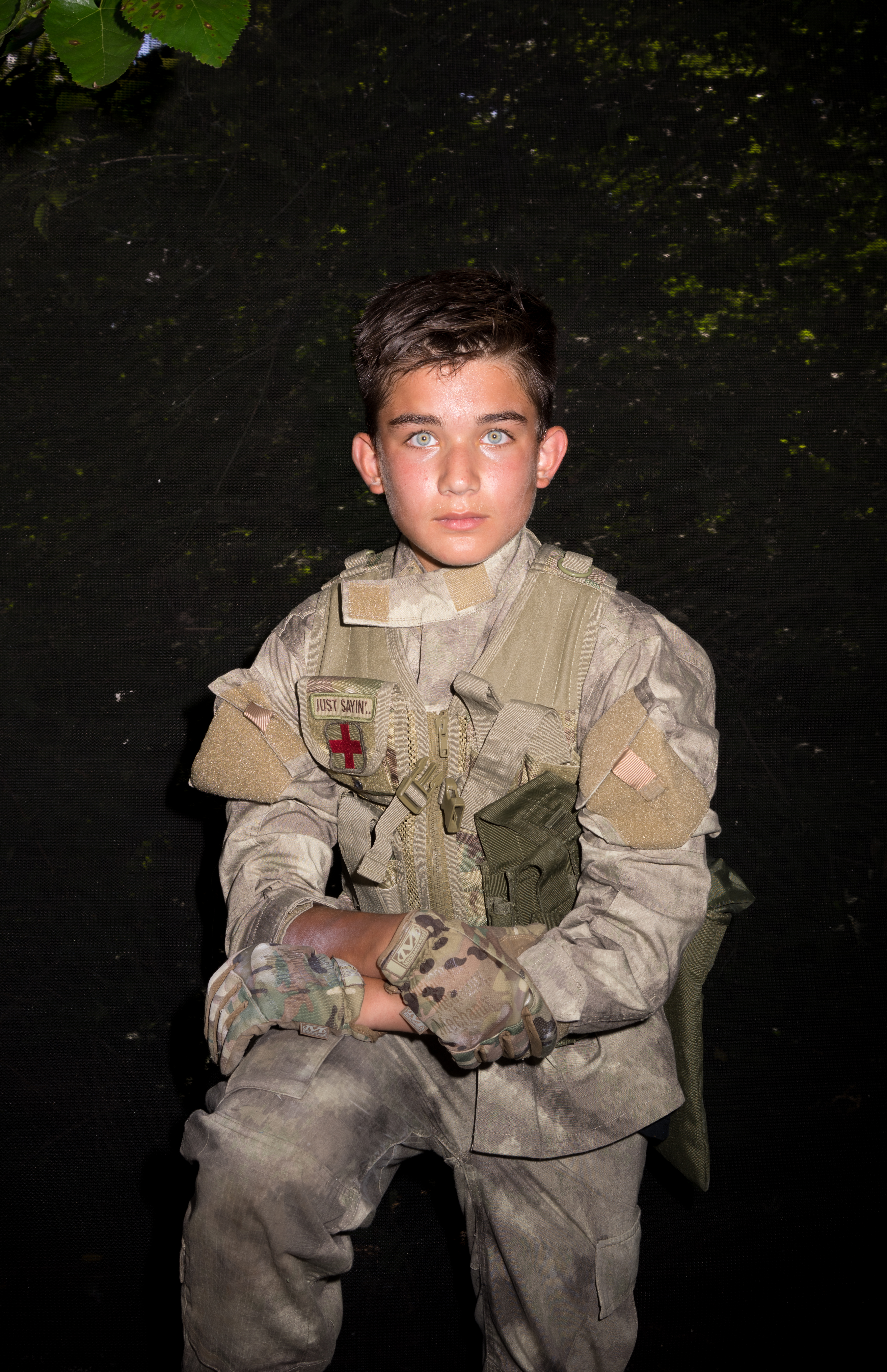

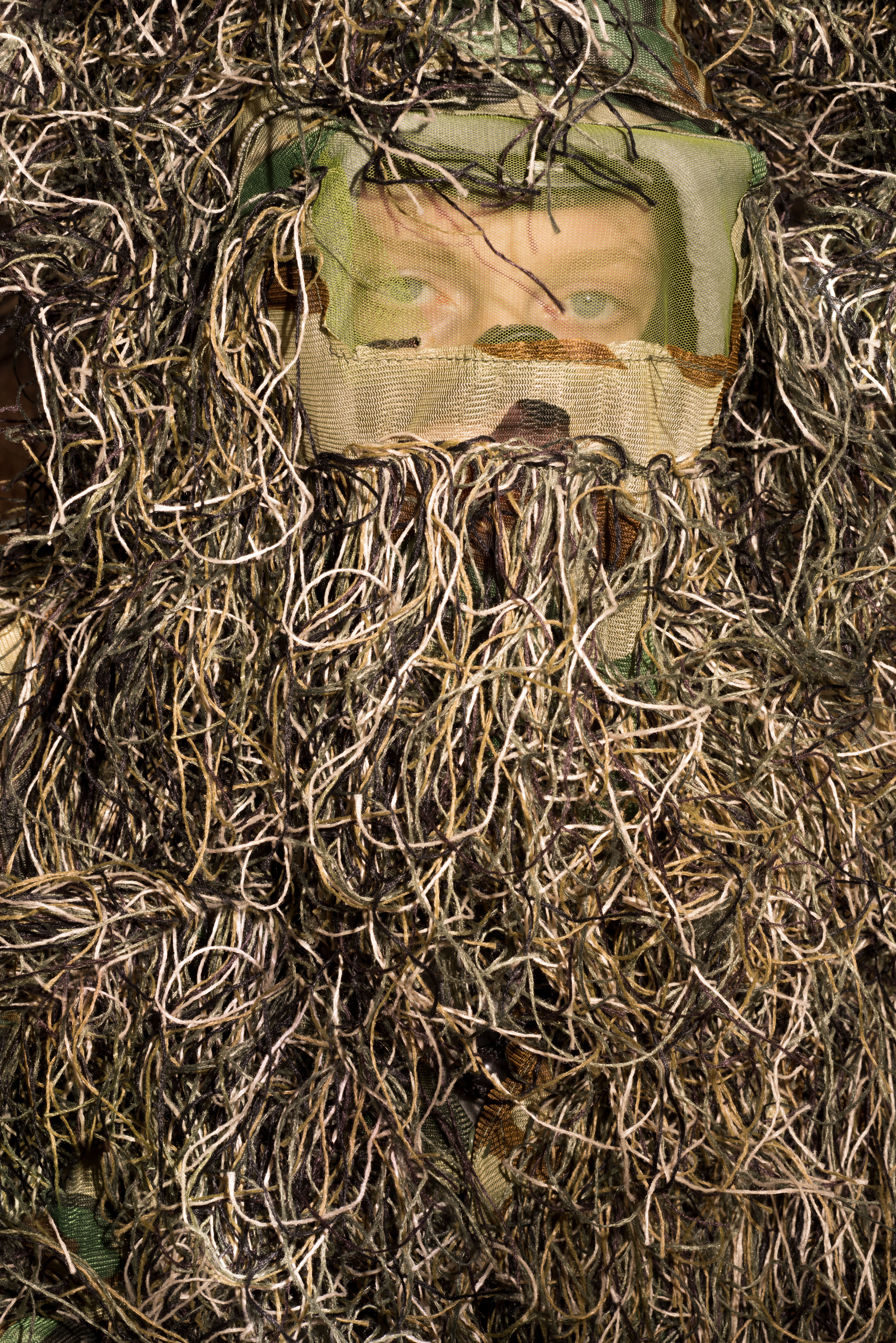
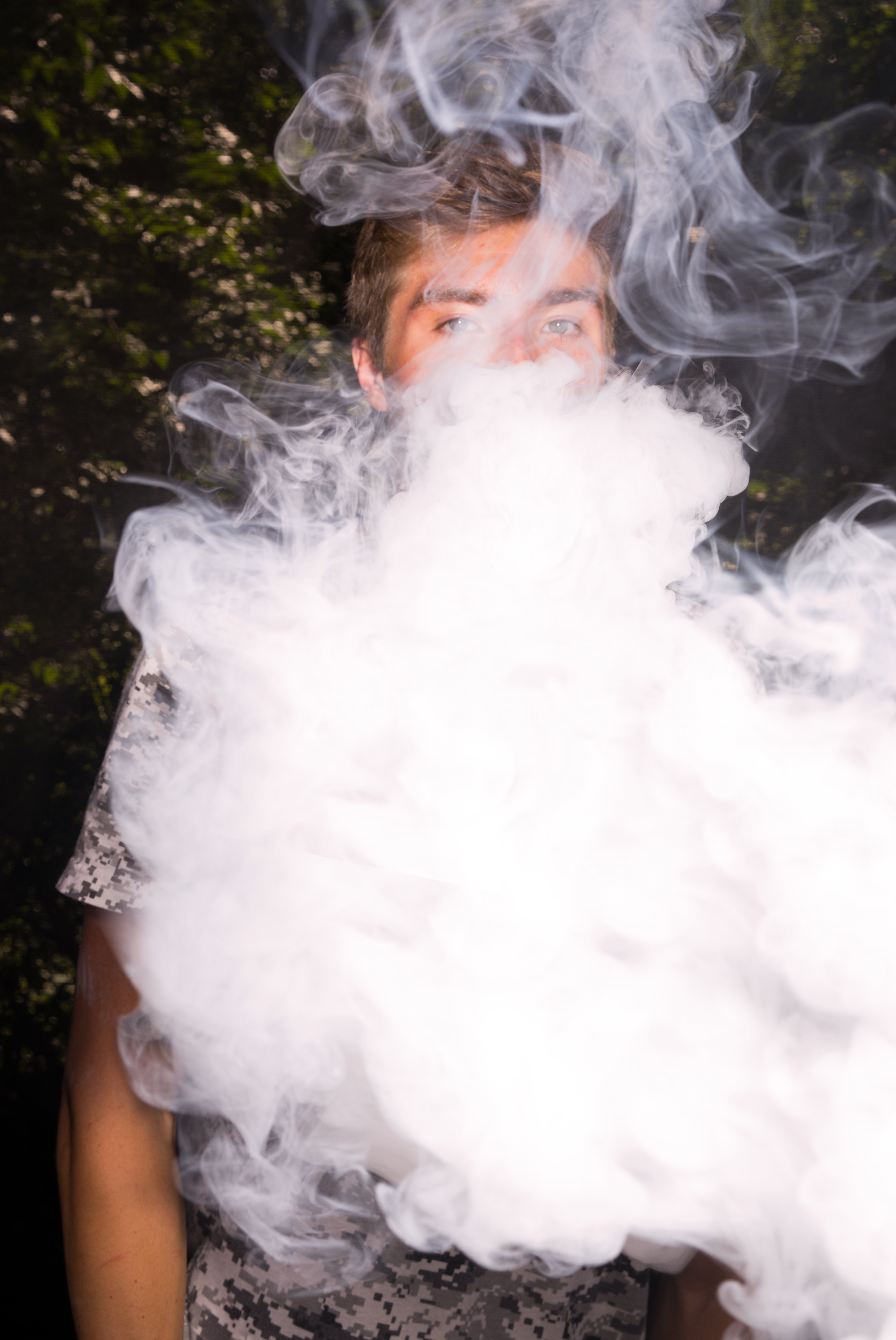
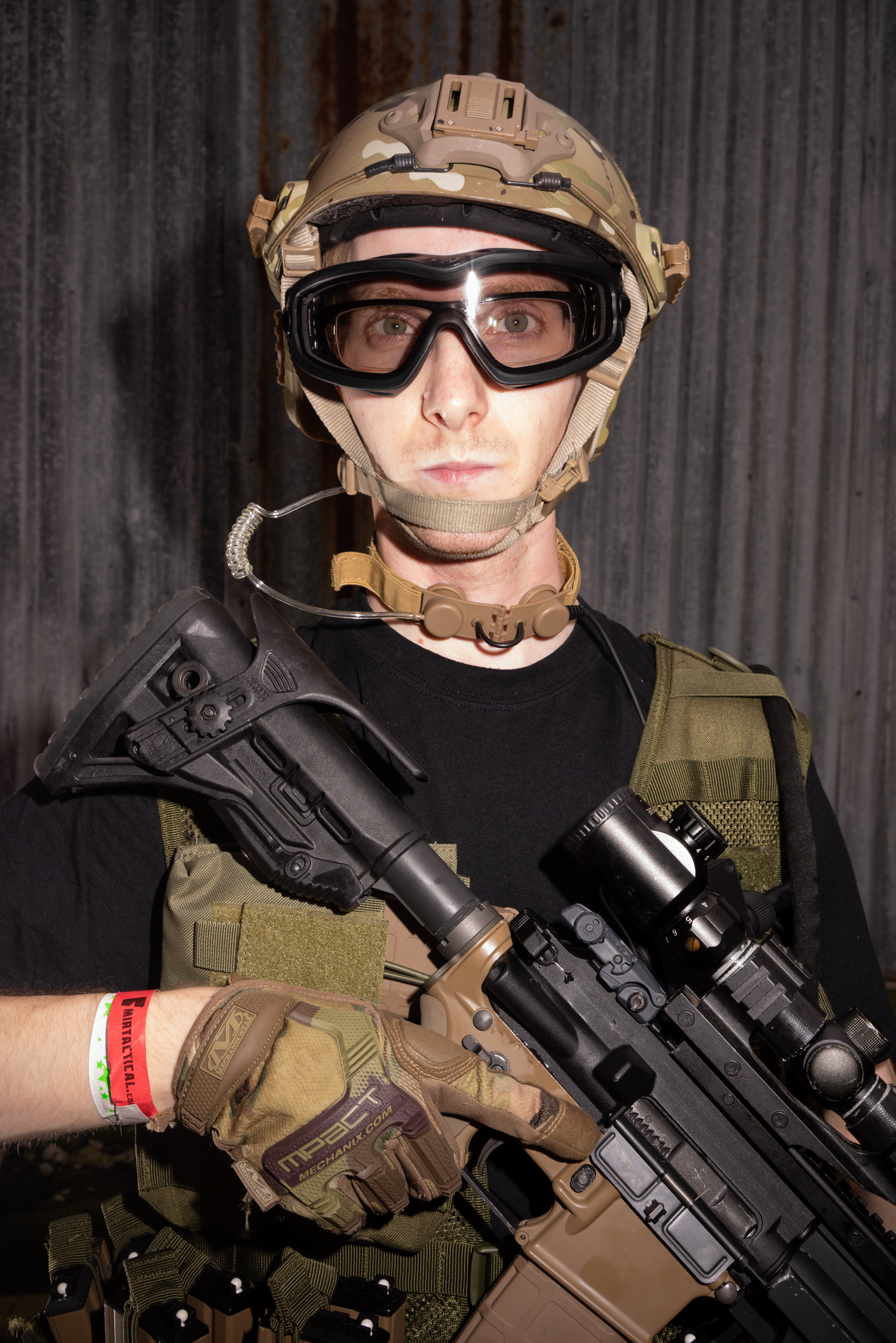
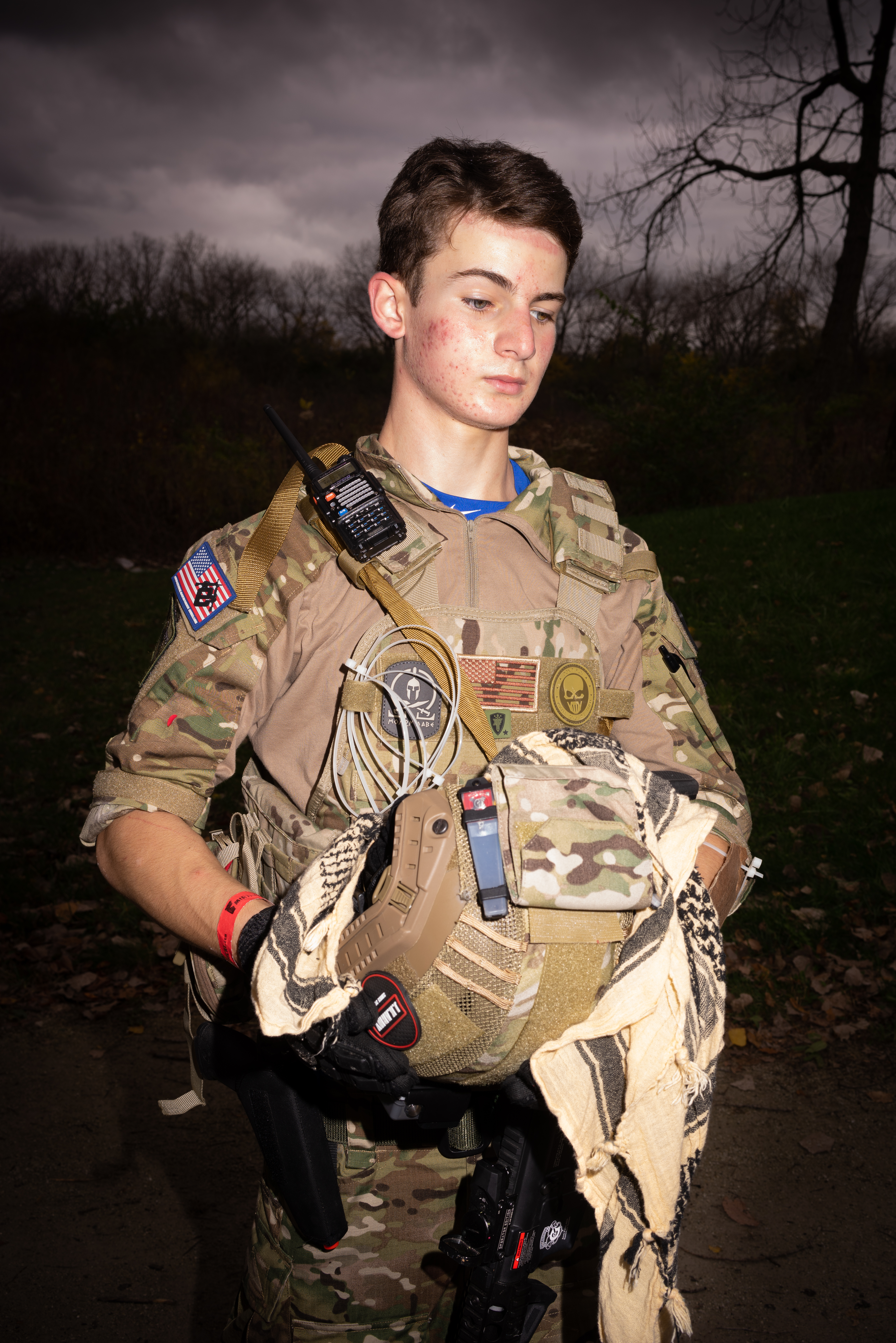
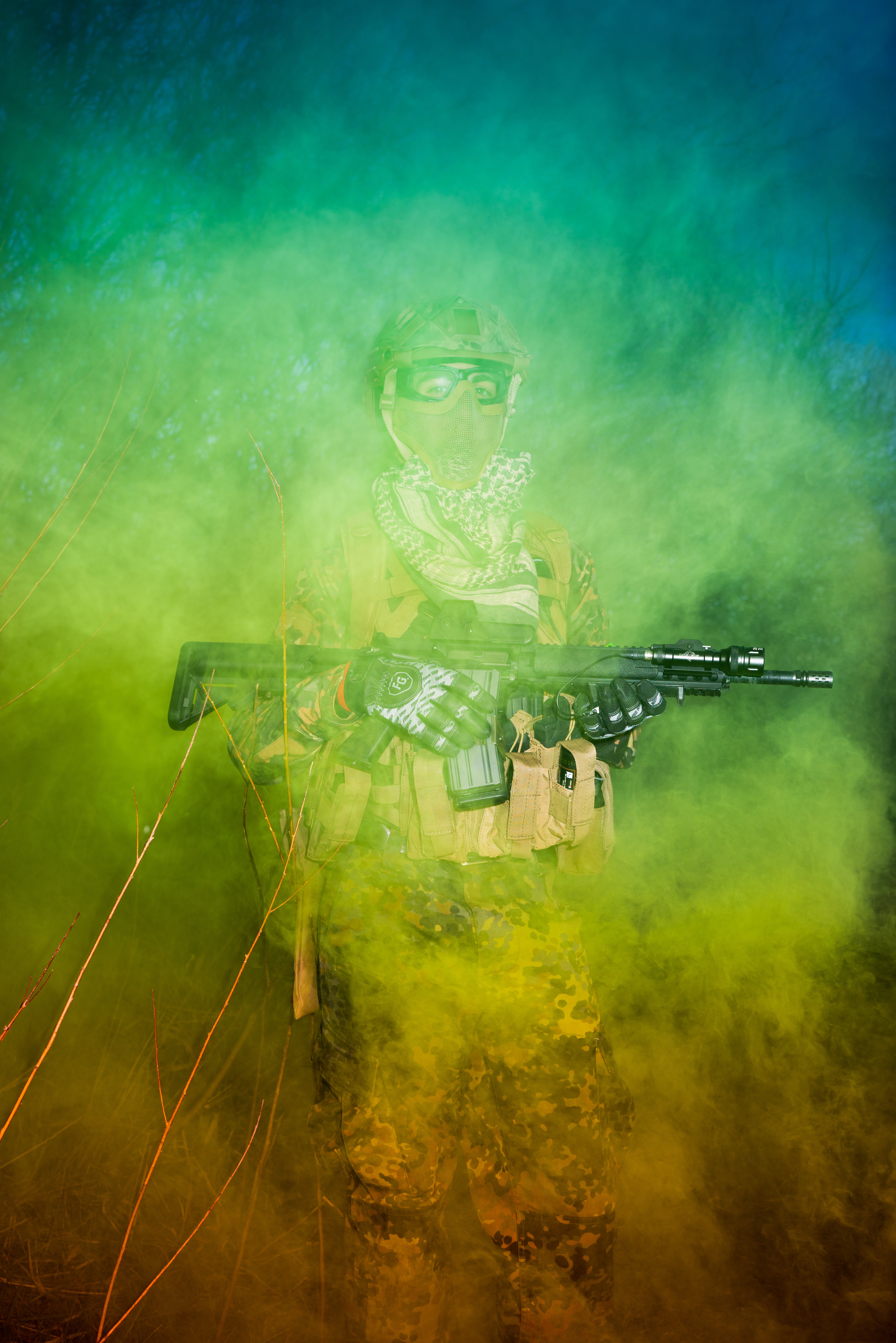
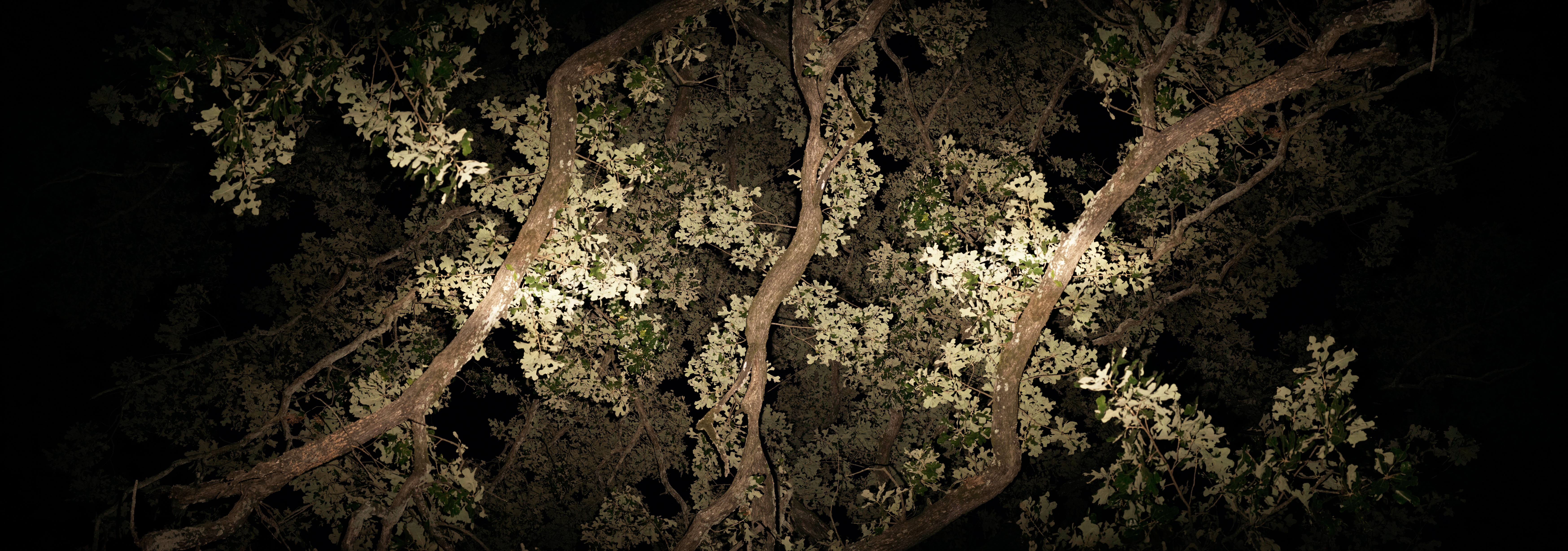
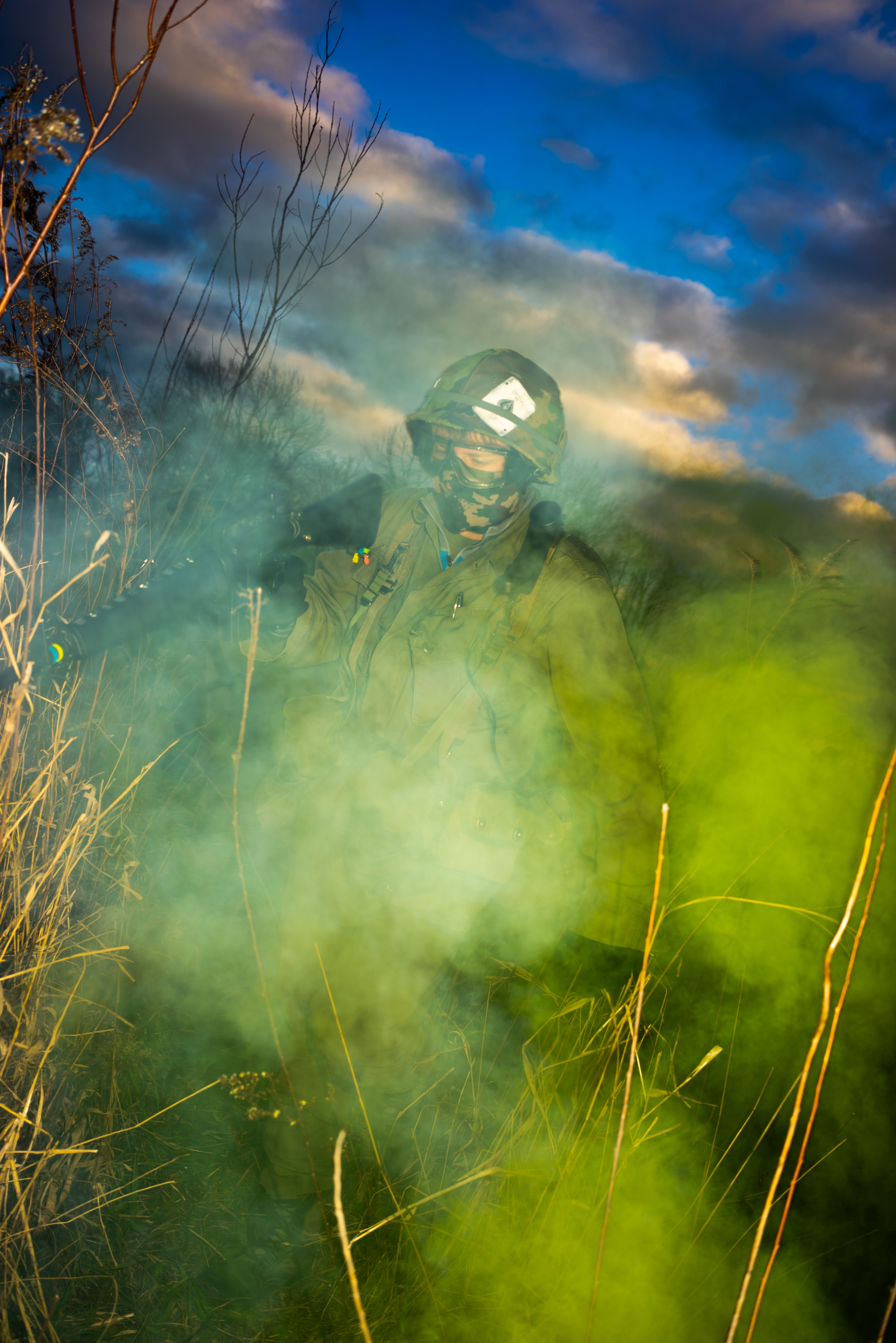

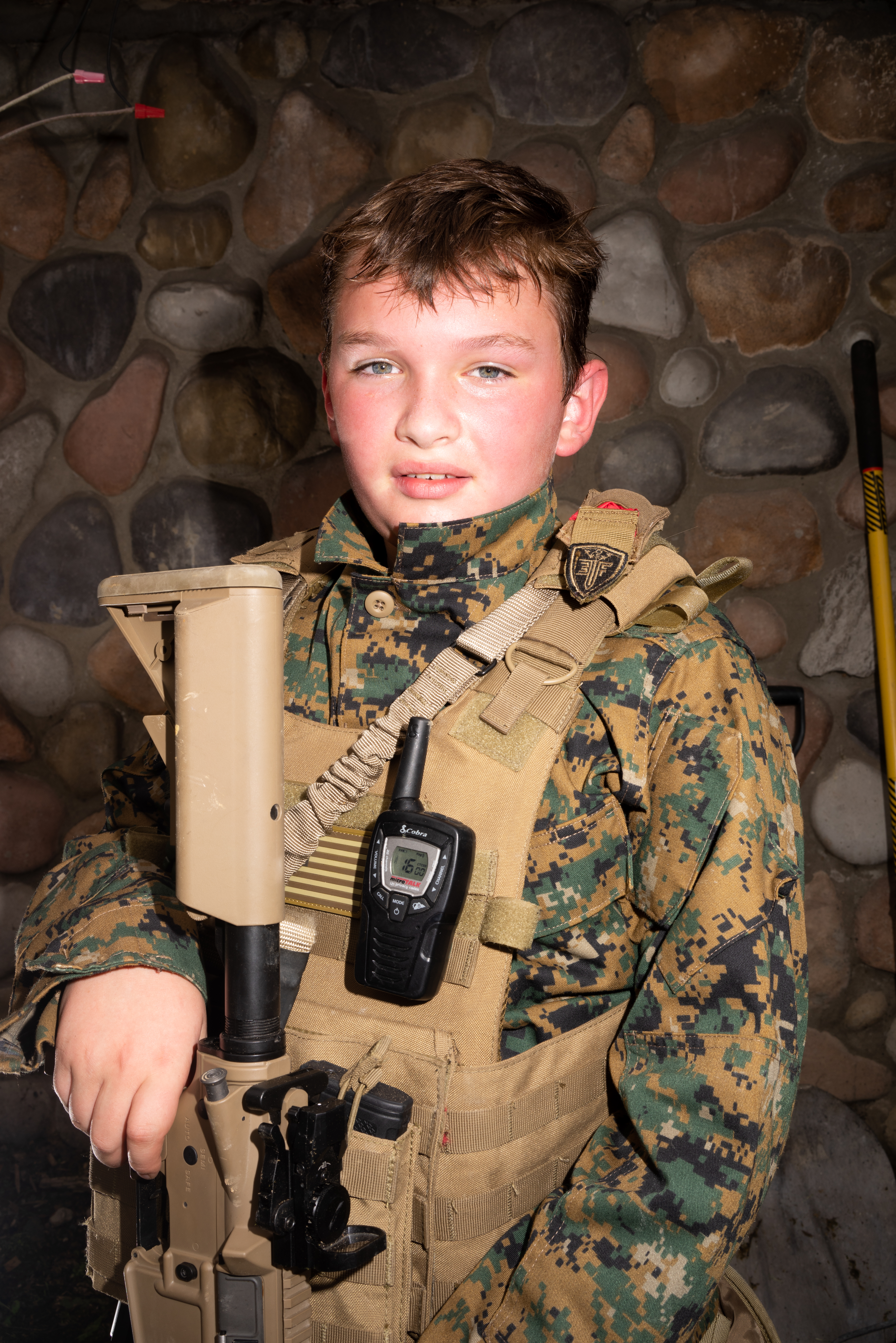


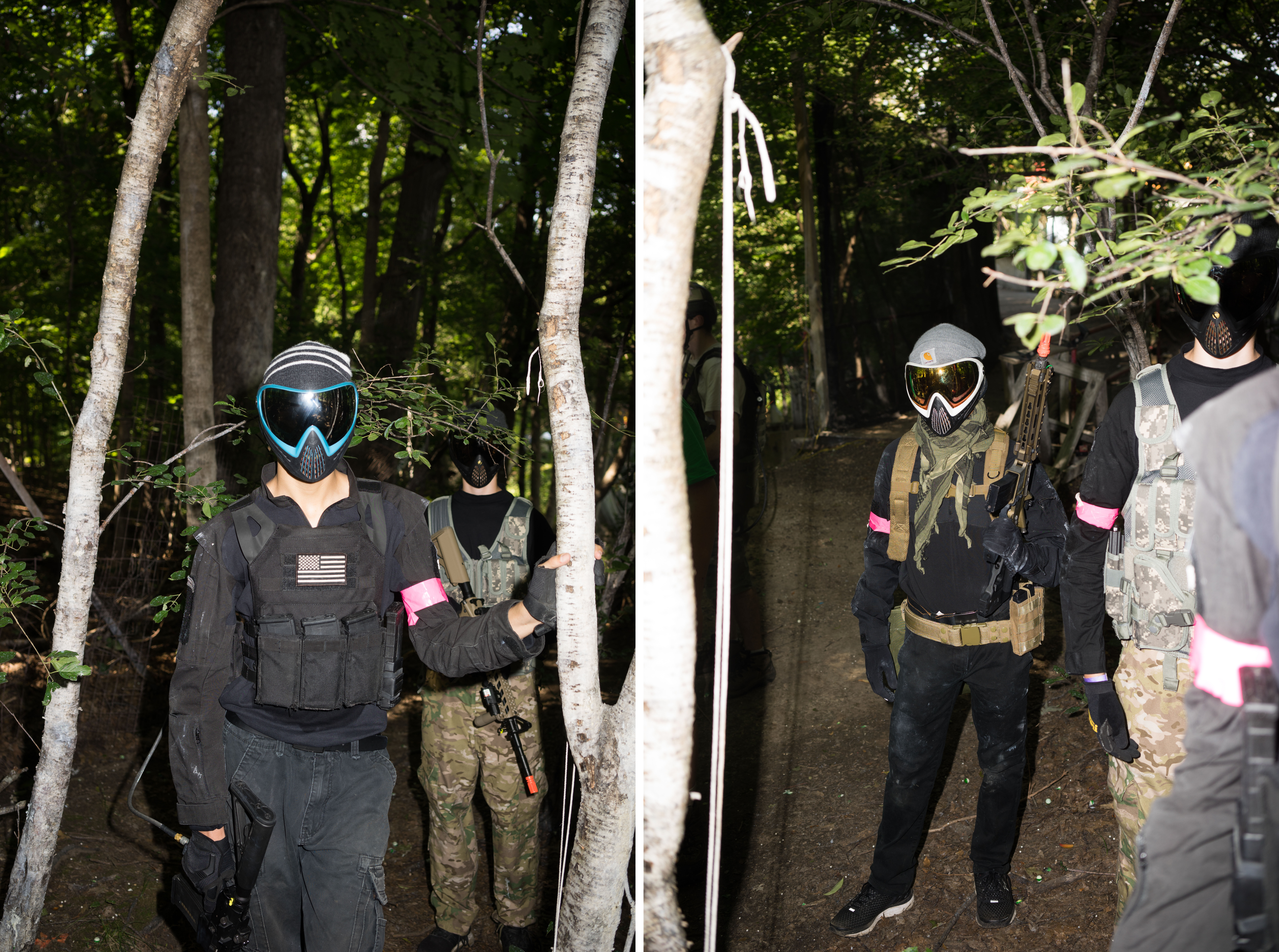
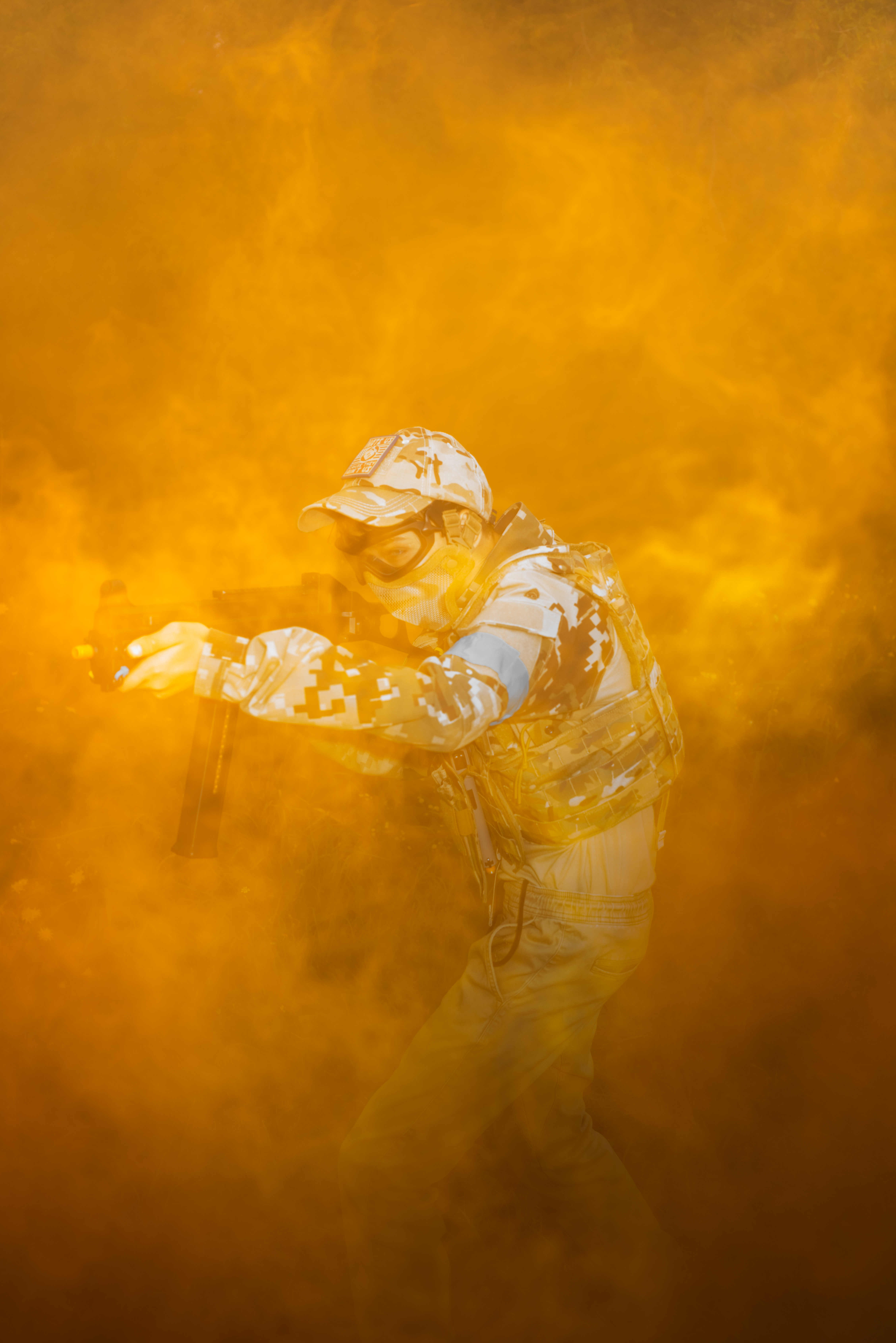
Past Portfolio
Justin Schmitz’s photographs investigate various facets of youth culture in the Midwest. In his most recent series, Mosh, he focuses on teenagers who join in mosh pits at hardcore punk concerts, in which audience members dance by pushing or slamming into each other. Schmitz states, “My subjects use the mosh pit as a platform to release the hostility and aggression they identify with in the music. These images are the aesthetic interpretation of my subject’s violent expression.” A selection of the photographs in the series freeze one or two dancers mid-motion, using a bright flash to frame them against a backdrop of darkness. By isolating individual figures from the crowd Schmitz accentuates the extreme physicality of their gestures and the force of their expressions. He also undermines the perception of the mosh pit as a violent group muddle, replacing it with a vision of a cathartic personal space. Schmitz accompanies the action shots with formal portraits of the concertgoers, who pose for him away from the mosh pit. Photographing them at an intimate distance from a frontal perspective and using the same blacked-out background, Schmitz draws our attention to the clothes they wear and how they carry themselves, and to the similarities and differences between them. The portraits also act as an invitation to look the young hardcore music fans in the eye. The hostility and aggression that Schmitz speaks of seems largely absent in the individual faces, underlining how these feelings are let loose, and perhaps reside, in the mosh pit.

